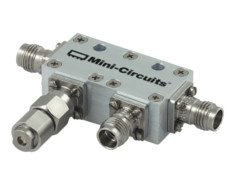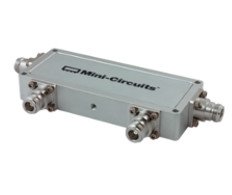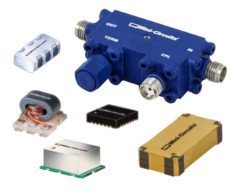RF Couplers
Mini-Circuits' RF and microwave couplers cover a wide range of 50-Ohm and 75-Ohm applications from DC to 43.5 GHz. Our RF coupler portfolio includes directional couplers, bi-directional couplers, dual-directional couplers and RF power taps in coaxial, surface mount and MMIC die formats. Utilizing a variety of technologies from LTCC and MMIC to transformer, microstrip / stripline and directional bridge, Mini-Circuits RF couplers offer coupling ratios ranging from 5.6 dB to 50 dB with excellent flatness over broad bandwidths, power handling up to 300W, high directivity, low mainline loss and excellent VSWR. Most Mini-Circuits couplers are RoHS compliant and are capable of meeting requirements for hi-rel and space level operating environments. Whether you're working in VHF/UHF, wireless communications, military and defense, satellite communications, CATV and broadband/optical, test and measurement, you name it, with hundreds of models in stock, chances are Mini-Circuits has a solution for your needs.
RF couplers are passive devices that sample a small amount of signal from an RF chain. Many RF components have an input port where the signal goes in, and an output port where the signal comes out. Couplers have an additional "coupled" port which taps the main signal at a small fraction of the power of the thru line. The ratio in dB of the signal power at the input port to the output power at the coupled port is the Coupling Ratio or Coupling Coefficient. The coupling ratio is a known parameter specified by the device manufacturer and can be selected according to the user's system requirements. Different types of couplers include directional couplers, bi-directional couplers, and dual directional couplers. Put simply, directional couplers sample signal from the main line in forward direction; bi-directional couplers have two coupled ports to sample signal from the forward or reflected signal paths as needed; and dual directional couplers allow simulataneous sampling of both thru- and reflected signal power. Couplers are widely used in RF systems for a variety of functions including power monitoring, antenna reflection monitoring, automated gain control, and electrical test and measurement among many others.





